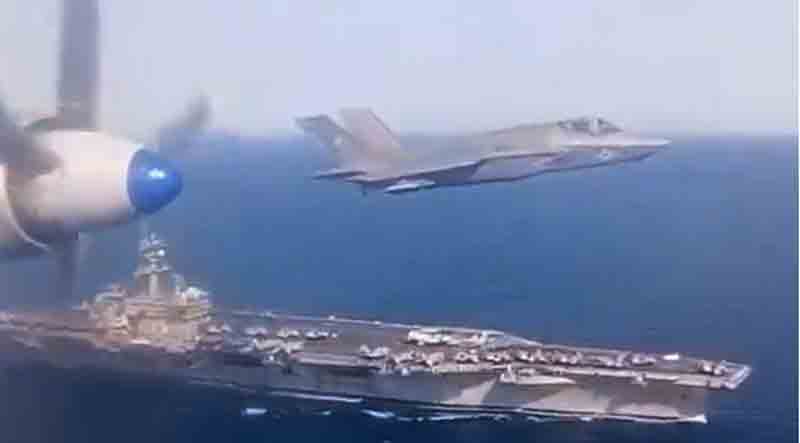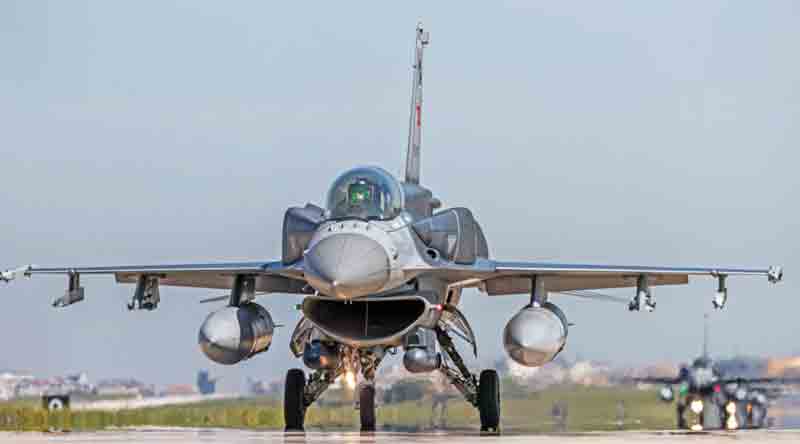Beginning April 1st, Rosoboronexport, the Russian state-owned arms export agency, will take part in the LAAD 2025 defense and aviation exhibition in Rio de Janeiro, Brazil, where it will present a range of cutting-edge military equipment. The showcased items will include the Su-57 fifth-generation fighter jet, a variety of helicopters, the T-90MS main battle tank, the BMPT tank support vehicle, the S-400 air defense system, Igla portable air defense systems, and naval assets such as the Project 22160 patrol ship.
As one of the leading defense technology events in Latin America, this exhibition offers Rosoboronexport an opportunity to display its latest products and seek potential industrial collaborations within the region. The agency has expressed a desire to enhance its presence in Latin America, prompting discussions about the viability and consequences of these aspirations.
Rosoboronexport, a division of the Rostec State Corporation, serves as Russia’s exclusive intermediary for the export and import of military and dual-use goods. Its participation in LAAD 2025 highlights a strategic initiative to strengthen relationships with Latin American countries, where Russian military equipment has established a significant presence over recent decades.
The Su-57, a stealth fighter aimed at rivaling American models like the F-35, is expected to attract considerable interest, alongside the S-400, a long-range air defense system that remains a key component of Russia’s export offerings.
The T-90MS, an enhanced version of the proven T-90 tank, and the BMPT, often referred to as the Terminator for its support role in armored operations, demonstrate Russia’s focus on advancing ground forces technology. Additionally, the inclusion of naval platforms like the Project 22160 ship signifies an effort to cater to nations with maritime security requirements.
The agency’s involvement comes at a time when Latin America is increasingly recognized as a promising market for defense exports. As reported by the Russian news agency TASS, Rosoboronexport has expressed its readiness to explore “new industrial cooperation projects” that align with contemporary market demands.
This has sparked discussions about the potential establishment of production facilities in the region, which could alter the landscape of the global arms trade. Although no formal agreements have been announced, this concept is consistent with Russia’s previous initiatives to localize production in allied nations, a strategy that aims to lower costs and enhance bilateral relationships.
Historically, Russia has engaged in military-technical partnerships with various Latin American countries. Brazil, the venue for LAAD 2025, has been a collaborator since 1994, when it entered into a contract for Igla MANPADS, which are portable air defense systems designed to target low-flying aircraft.
A notable development occurred in 2008 with an intergovernmental agreement that facilitated the delivery of Mi-35M helicopters, along with the establishment of a service center in Brazil for maintenance purposes.
“We have significant potential to further strengthen our cooperation with Brazil,” stated Sergey Ladygin, Deputy General Director of ROE, during a previous LAAD event in 2015, as noted on the company’s official website. This perspective seems to remain relevant, as the agency is now looking to expand its industrial collaboration.
In addition to Brazil, nations such as Venezuela and Peru have also been significant clients. Venezuela, in particular, has procured a considerable amount of Russian military equipment, including T-72 tanks and S-300 air defense systems, reflecting its close ties with Moscow. Meanwhile, Peru operates a fleet of Mi-8 and Mi-17 helicopters, showcasing the resilience of Soviet-era designs that Russia continues to upgrade.
These partnerships lay the groundwork for Rosoboronexport’s goals, yet the idea of local production adds a layer of complexity. Setting up manufacturing facilities would necessitate substantial investment, political cooperation, and a stable economic climate—elements that differ significantly throughout the region.
The concept of weapon production in Latin America is not entirely new. Rosoboronexport has engaged in similar ventures in other countries, particularly in India, where it has worked on projects such as the BrahMos missile system in collaboration with India’s Defense Research and Development Organization.
In a statement from February 2025 reported by TASS, CEO Alexander Mikheev highlighted that contracts totaling $50 billion have been established with India since 2005, with Russia holding a 30% share of the Indian arms market.
This co-production model could potentially serve as a framework for Latin America, although the region’s limited defense budgets and varied political environments pose distinct challenges.
Experts recognize both potential benefits and hurdles in this strategy. “Latin America has an increasing demand for advanced defense systems, but the critical issue is whether these nations can invest in the necessary production infrastructure,” remarked Maria Gonzalez, a defense industry analyst at the Washington-based Center for Strategic Studies.
She identified Brazil’s aerospace industry, spearheaded by firms like Embraer, as a possible collaborator for Russian technology transfers, but warned that economic limitations and U.S. influence in the region could hinder such agreements.
The United States plays a significant role in the arms market of the Western Hemisphere, providing military equipment such as Black Hawk helicopters and F-16 jets to nations like Colombia and Chile, often linking these sales to broader security collaborations.
At LAAD 2025, attendees will witness a showcase of Russia’s technological advancements. The Su-57, featuring cutting-edge avionics and stealth capabilities, is presented as a competitor to the F-35, although its production numbers are considerably lower than those of its American rival.
Lockheed Martin, the producer of the F-35, announced that it had delivered over 900 units by early 2025, based on company reports. In contrast, the Stockholm International Peace Research Institute estimates that fewer than 30 Su-57s are currently operational.
The S-400 system, with a range of up to 400 kilometers, has been utilized in conflicts such as Syria, where it has received accolades for its performance, but it has also faced criticism due to its high costs and maintenance requirements.
The T-90MS, an upgraded version of the T-90 series, features enhanced armor and fire control systems, positioning it as a competitor to Western tanks like the M1 Abrams, which the U.S. has supplied to allies in the Middle East and Eastern Europe.
The BMPT, designed for tank protection in urban warfare, occupies a specialized role that few other systems address directly, although its effectiveness is contingent on the specific military strategies of potential buyers. The Igla MANPADS, a lightweight, shoulder-fired missile system, serves as a budget-friendly alternative to the U.S.-made Stinger, which gained attention during the conflict in Ukraine.
The Project 22160 patrol ship, featuring a modular design and drone capabilities, is aimed at navies in search of adaptable, mid-sized vessels, positioning it in competition with European manufacturers such as France’s Naval Group.
Rosoboronexport’s expansion into Latin America also has significant geopolitical implications. Russia’s military exports often function as a diplomatic strategy to counterbalance Western influence in areas dominated by the U.S. “This is as much about politics as it is about economics,” stated James Carter, a former Pentagon official now affiliated with the Atlantic Council.
He pointed out that while Russia’s arms sales to Latin America reached $2.5 billion in 2020, based on Rosoboronexport’s data, this figure represents only a small portion of the global market, where the U.S. led with $138 billion in exports that same year, according to the U.S. State Department. Nevertheless, even slight increases could enhance Russia’s influence in the region.
For Latin American nations, the attractiveness of Russian military equipment stems from its cost-effectiveness and dependability. The Mi-171Sh helicopter, for example, is well-suited for the challenging landscapes of the Andes or the Amazon, where American alternatives may come with higher costs or more stringent usage restrictions.
However, any shift towards local production would require more than just interest from buyers. “You need skilled labor, supply chains, and political will,” Gonzalez noted. “Brazil may have the necessary capacity, but smaller countries like Bolivia or Ecuador would face challenges.”
The exhibition in Rio de Janeiro will also act as a platform for Rosoboronexport to convey its message. The agency has highlighted that the systems on display, including the Su-57 and S-400, have been “upgraded based on feedback from the military” involved in Russia’s current operations, referencing the conflict in Ukraine, as reported by TASS.
This battle-tested branding may appeal to potential customers, but it also risks distancing those hesitant to connect with Moscow due to ongoing international sanctions.
As LAAD 2025 progresses, attention will shift beyond the equipment on display to the conversations taking place in the background. The delegation from Rosoboronexport is anticipated to engage with representatives from Brazil and other regional stakeholders to explore collaborative opportunities.
The outcome of these discussions remains uncertain; however, the agency’s order portfolio—valued at $57 billion across 44 countries as of late 2024, according to Mikheev—indicates it possesses the means to pursue ambitious objectives.
At this stage, the event represents a strategic move in Russia’s effort to enhance its presence in Latin America, advancing one weapon system at a time. The upcoming months will determine whether this exhibition leads to contracts, manufacturing facilities, or merely a more prominent position in a competitive market.
Discover more from Defence Talks | Defense News Hub, Military Updates, Security Insights
Subscribe to get the latest posts sent to your email.





